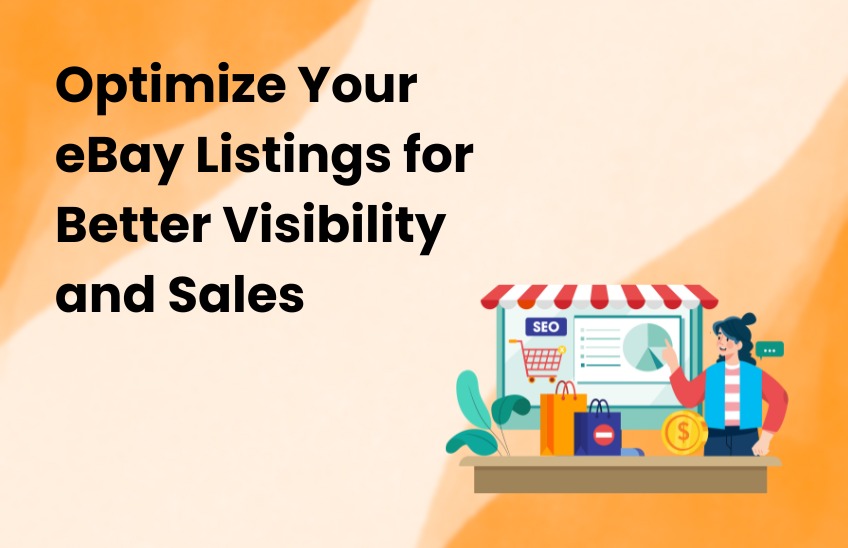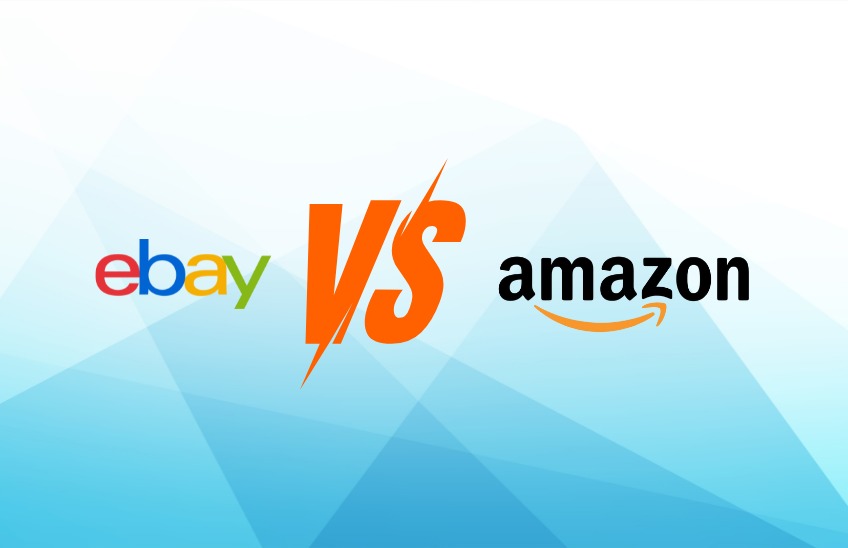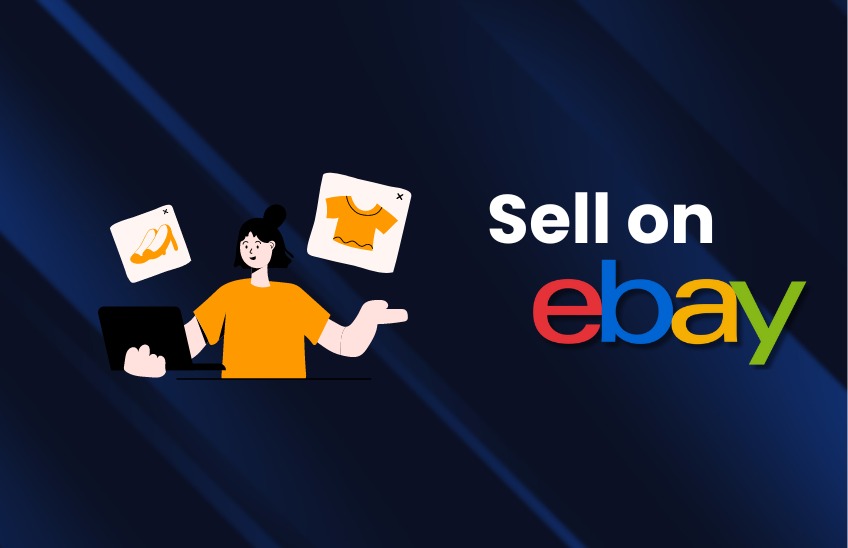SEO vs. SEM: Which Strategy Is Right for Your Business?

In the ever-evolving world of digital marketing, understanding the difference between SEO (Search Engine Optimization) and SEM (Search Engine Marketing) is crucial for developing an effective strategy tailored to your business goals. This article will explore these two key approaches, their unique strengths, and tips for integrating them for maximum results. What Is SEO (Search Engine Optimization)? Definition SEO is the process of optimizing a website to improve its organic (unpaid) search rankings on search engine results pages (SERPs). The ultimate goal is to increase organic traffic by making your website more visible and accessible to potential customers searching for relevant topics. Key SEO Techniques Keyword Research: Identifying and targeting the right keywords that your audience is searching for. On-Page SEO: Optimizing elements on your site, including meta titles, headers, and content. Technical SEO: Improving site structure, mobile responsiveness, and page load speed. Off-Page SEO: Building backlinks and external trust signals. User Experience (UX): Enhancing the design and navigation of your website to improve user engagement. Local SEO: Optimizing for location-based searches, which is essential for local businesses. Monitoring and Analytics: Tracking performance using tools like Google Analytics to refine your strategy. Timeframe SEO is a long-term strategy that requires patience but offers sustainable results over time. It can take months to see significant improvements in rankings, but once established, organic traffic can be maintained with minimal ongoing costs. Cost While there is an initial investment in resources and time, SEO does not incur direct costs for clicks or impressions. This makes it a cost-effective approach once your site achieves strong rankings. Benefits Credibility: Organic search results are generally perceived as more trustworthy than paid ads. Sustainability: SEO can provide ongoing traffic without continuous financial investment. Increased Visibility: Over time, SEO can establish your site as an authoritative resource in your industry. What Is SEM (Search Engine Marketing)? Definition SEM is a broader digital marketing strategy that involves paid advertising to increase a website’s visibility in search engine results. The most common form of SEM is Pay-Per-Click (PPC) advertising, where you bid on keywords to display ads to users searching for those terms. Key SEM Techniques Paid Search Campaigns: Creating and managing PPC ads. Targeting and Segmentation: Customizing ads based on demographics, location, and user behavior. Ad Copy Optimization: Writing compelling, high-converting ad copy. Landing Page Optimization: Ensuring landing pages are optimized for conversions. Performance Tracking and Analytics: Measuring and refining ad performance using tools like Google Ads and SEMrush. Budget Management: Allocating and adjusting your budget based on ROI. Timeframe SEM provides instant results as ads can start driving traffic as soon as they go live. This makes it perfect for short-term campaigns, promotions, and new product launches. Cost SEM requires a continuous budget since businesses pay for each click or impression. While it can be costly, it provides highly targeted traffic that often results in faster conversions. Benefits Immediate Results: Get instant visibility and traffic. Precise Targeting: Tailor ads to specific audiences, ensuring your budget is used effectively. Measurable Outcomes: Gain insights into the performance of your campaigns and optimize for better results. SEO vs. SEM: Which Should You Choose? SEO: Best for Long-Term Growth If your goal is to build credibility, trust, and sustainable traffic, SEO is the way to go. It’s ideal for businesses that want to establish long-term brand authority and are willing to invest time into content creation and optimization. SEM: Best for Immediate Results If you’re running a time-sensitive promotion or need quick traffic to your website, SEM is your best bet. With precise targeting options and instant visibility, SEM is perfect for seasonal campaigns or product launches. Combining SEO and SEM for a Balanced Strategy Many successful businesses use a combination of both SEO and SEM for a balanced digital marketing strategy. This allows them to leverage the long-term benefits of SEO while using SEM to fill short-term traffic needs and promote specific campaigns. Tips for Combining SEO and SEM: Analyze Your Budget: Allocate resources strategically between both approaches. Test Ad Copy: Use insights from your SEM campaigns to improve SEO content strategies. Monitor Performance: Continuously review analytics to adjust and improve both tactics. Use SEO Data for SEM: Utilize high-performing SEO keywords in your paid campaigns to enhance SEM effectiveness. Conclusion Choosing between SEO and SEM—or finding the right balance of both—depends on your business goals, budget, and the timeframe for your marketing efforts. SEO is a long-term investment that builds credibility and organic traffic, while SEM provides fast results and precise audience targeting. For most businesses, integrating both strategies can lead to the best results by maximizing reach and visibility. At IDB Pakistan’s Digital Marketing Course, we guide you through mastering both SEO and SEM strategies to elevate your business or career. With hands-on training, expert mentorship, and comprehensive resources, you’ll be equipped to make informed decisions and achieve your digital marketing goals. Ready to take your skills to the next level? Explore our full range of courses here.
How to Optimize Your eBay Listings for Better Visibility and Sales

In the highly competitive world of eCommerce, standing out on eBay is essential for boosting sales and driving consistent business growth. Optimizing your eBay listings is the key to achieving better visibility, drawing in potential buyers, and maximizing sales. This comprehensive guide will walk you through effective strategies for improving your eBay listings, from keyword usage to top-notch visuals and strategic pricing. By the end, you’ll know how to make your listings pop and convert views into sales. 1. Understand and Implement the Right Keywords Keywords play a critical role in how buyers find your products. Conduct thorough keyword research to identify the most relevant and high-traffic search terms for your product. Use tools like Google Keyword Planner or eBay’s own search suggestions to find popular terms related to your items. Tips: Place primary keywords in the title and subtitles. Incorporate secondary keywords naturally in the item description. Avoid keyword stuffing, as it may harm your listing’s performance and readability. Learn more about finding the right keywords in our eBay Course that dives deep into keyword optimization strategies. 2. Craft a Compelling Title Your eBay listing title is the first thing buyers see, so make it count. A well-structured title should be clear, concise, and descriptive. Include essential keywords while adhering to eBay’s title character limit. Example of an optimized title: “Vintage Leather Backpack – Brown – Handcrafted – Travel Bag – Unisex – New” 3. Create High-Quality Product Descriptions An engaging product description gives buyers the information they need to make a purchase decision. Ensure your description is detailed yet easy to read. Highlight the unique features, benefits, and specifications of your product. Break the text into bullet points and short paragraphs for readability. Tips: Address common questions buyers may have. Use persuasive language and include a call to action (e.g., “Buy now for fast shipping!”). Include care instructions or usage tips to add value. eBay’s Seller Center provides guidelines on creating effective product descriptions. 4. Utilize High-Quality Images The quality of your product images can make or break a sale. Use clear, well-lit, and high-resolution images that showcase the product from different angles. Include close-ups for details and lifestyle shots when applicable. Tips for better images: Ensure images meet eBay’s image requirements (minimum of 500 pixels on the longest side). Use a neutral background to keep the focus on the product. Avoid watermarks and text overlays on images to maintain professionalism. 5. Leverage eBay’s Item Specifics eBay’s item specifics feature allows sellers to add detailed information such as brand, size, color, and model. Completing these fields can significantly enhance your listing’s visibility, as buyers often use filters to narrow down search results. Tips: Fill out as many item specifics as possible for higher search ranking. Double-check that the details align with your product to avoid customer dissatisfaction. 6. Set Competitive Pricing Competitive pricing is crucial for attracting buyers. Research the prices of similar items on eBay and aim to set a price that offers good value. Incorporating features like “Best Offer” can also entice potential buyers who might otherwise pass up your listing. Tips: Monitor your competitors’ pricing trends. Factor in eBay fees and shipping costs when determining your profit margin. Want to learn the art of pricing strategies? Check out our advanced modules in the eBay Course. 7. Offer Fast and Free Shipping Buyers often filter their searches by free and fast shipping options. Providing free shipping can make your listings more appealing, and using expedited services can boost your credibility and customer satisfaction. Tips: Include the shipping cost in your product price if offering free shipping. Communicate clear shipping timelines to avoid negative feedback. 8. Utilize eBay Promotions and SEO Techniques Running promotions such as discounts and limited-time offers can improve the visibility of your listings. Additionally, using SEO techniques like linking to your other listings or including internal links within your product description can help engage users for longer periods and improve your ranking. Check out eCommerce SEO tools for more SEO strategies. 9. Gather and Highlight Positive Feedback Customer feedback is essential for building trust. Encourage satisfied customers to leave positive reviews, and prominently feature your rating score in your listings. Positive reviews not only increase your credibility but also enhance your product’s desirability. Tip: Address any negative feedback proactively to maintain a positive seller reputation. Conclusion Optimizing your eBay listings requires attention to detail and a strategic approach, but the rewards are worth it. From keyword optimization and pricing strategies to high-quality images and fast shipping, these techniques can significantly enhance your listings’ visibility and boost your sales. Ready to become an eBay selling expert? Our comprehensive eBay Course offers deep dives into each of these optimization techniques and more. Join us at IDB Pakistan and transform your eBay business today!
eBay vs. Amazon: Which Platform is Better for Your Business?

The world of eCommerce is vast, with countless platforms available for budding entrepreneurs and seasoned sellers alike. Two of the most prominent giants in this space are eBay and Amazon. Each platform boasts unique strengths and attracts different types of sellers and buyers. The question that often arises is: Which platform is better for your business—eBay or Amazon? This article will break down the key differences to help you make an informed decision and give you insights on how to master these platforms effectively. 1. Overview of eBay and Amazon eBay is known as an auction-based marketplace where sellers list items that buyers can bid on, although a significant portion of eBay’s sales now comes from fixed-price listings. eBay is ideal for selling unique, vintage, or second-hand items and offers significant flexibility to sellers in terms of pricing and listing styles. Amazon, on the other hand, is a highly structured platform focused primarily on new products. It offers the advantage of massive traffic and brand trust, positioning itself as the go-to place for anything from books and electronics to apparel and home goods. Amazon’s Fulfilled by Amazon (FBA) service allows sellers to leverage Amazon’s extensive logistics network for warehousing and shipping. 2. Fees and Costs Understanding the fee structure of each platform is crucial for managing profitability: eBay: Sellers face insertion fees for listing items, as well as final value fees when a sale is made. While eBay’s fees can sometimes be lower than Amazon’s, the platform doesn’t offer bundled services like FBA. Amazon: Amazon charges sellers a monthly subscription fee for its Professional account (or a per-item fee for Individual sellers) and takes a percentage of each sale. With FBA, additional fulfillment and storage fees are incurred, but sellers benefit from Amazon Prime’s fast shipping, which can boost sales. 3. Seller Competition and Reach Amazon has significantly more competition due to its popularity, but it also provides a larger potential audience. High competition means sellers need to optimize their listings with SEO, reviews, and ads to stand out. eBay, while also competitive, allows for more niche markets. Sellers can list unique items with less fear of being undercut by larger merchants. eBay’s market structure supports sellers who wish to carve out specialized product offerings. 4. User Experience and Flexibility eBay: Listing Options: Offers more customizable listing formats, from auctions to fixed prices. Flexibility: Allows sellers to set their own return policies and create tailored shipping arrangements. Amazon: User Trust: With a reputation for seamless transactions, Amazon provides a user-friendly shopping experience that encourages repeat business. Brand Strength: Sellers can enhance credibility by associating with Amazon’s brand, but this comes at the cost of limited flexibility in how products are marketed. 5. Which Platform is Best for Your Business? Choose eBay if: You deal in second-hand, vintage, or rare items. You want more control over pricing and shipping policies. You prefer a platform with customizable listings. Choose Amazon if: You sell new, mass-market products and want exposure to millions of active buyers. You can handle the competition or plan to use FBA to provide fast, reliable shipping. You value the boost that Amazon’s brand credibility gives your products. 6. Maximizing Success on eBay and Amazon Regardless of the platform you choose, having the right strategies is essential for success. This includes understanding platform-specific SEO, optimizing product listings, and mastering ads and promotions. Looking to get started or advance your skills in selling on these platforms? Check out our comprehensive eBay Course and Amazon Course. Learn from industry professionals and join the ranks of successful sellers who know how to leverage these platforms effectively.
How to Start Selling on eBay: A Beginner’s Guide

Do you want to launch a new online business or sell the things you no longer need? Selling goods on eBay is a fantastic method to market your products to a worldwide customer base while working from home. This thorough beginner’s tutorial will take you step-by-step through the entire process, from setting up your account to closing your first deal. 1. Create Your eBay Account The first step in your eBay selling journey is to set up an account. Follow these simple steps: Visit the eBay website. Click on the “Register” button at the top right corner. Choose between a personal account or a business account: Personal Account: Ideal for casual sellers or individuals looking to sell personal items. Business Account: Suitable for entrepreneurs planning to sell products professionally. Once you fill out your information, click “Create account.” Tip: Make sure to use a valid email address, as eBay will send verification and account-related communications there. 2. Set Up Your Seller Profile A well-crafted seller profile enhances your credibility and helps attract potential buyers. Here’s how to create one: Profile Picture: Add a clear profile picture or a business logo. Description: Write a concise description about yourself or your business. Payment Preferences: Set your preferred payment method, such as PayPal or eBay-managed payments. 3. Decide What to Sell on eBay Before diving into listings, research products that are in demand. Here are a few ideas to get you started: Declutter Your Home: Start by selling items you no longer need, such as clothes, electronics, or collectibles. Research Trends: Explore eBay’s trending section to identify popular items and categories. Source Products: If you want to scale your selling efforts, consider sourcing products from wholesalers or local suppliers. Tip: Use eBay’s completed listings feature to see how similar items are priced and how quickly they sell. 4. Create Your First eBay Listing Creating an effective listing is crucial for attracting buyers. Follow these guidelines: Title: Write a clear and descriptive title. Use relevant keywords to optimize searchability. For example, “Brand New Apple iPhone 13 – 128GB, Midnight Black, Unlocked.” Photos: Upload high-quality images from multiple angles. Good lighting and clear backgrounds make a significant difference. Description: Provide a detailed product description, including key features, condition, and any imperfections. Transparency builds trust. Category: Choose the appropriate category to enhance visibility. Tip: eBay’s listing tools can help you format your listing and optimize it for search engines. 5. Set Shipping and Return Policies Shipping and return policies can significantly influence buyer decisions. Here’s how to set them: Shipping: Offer multiple shipping options, including standard and expedited. Free shipping can increase your sales. Returns: Decide on your return policy (e.g., 14 or 30 days) and clearly communicate it in your listing. Tip: Use eBay’s shipping calculator to estimate costs and determine the best options for your products. 6. Understand eBay Fees Familiarize yourself with eBay’s fee structure to avoid surprises. Here are the primary fees you should know about: Insertion Fees: A small fee for listing items (most sellers receive a number of free listings each month). Final Value Fees: A percentage of the sale price, including shipping. This fee is charged only when your item sells. Tip: eBay provides a fee calculator to help you estimate costs associated with selling your items. 7. Manage Orders and Provide Excellent Customer Service Once you start receiving offers or sales, managing orders effectively is crucial: Prompt Shipping: Ship items quickly to meet buyer expectations. Use quality packaging to prevent damage. Communicate with Buyers: Proactively address any concerns or inquiries from buyers. Good communication builds trust. Request Feedback: Encourage buyers to leave feedback, as positive reviews enhance your reputation on the platform. 8. Grow Your eBay Business After you complete a few sales, consider ways to expand your eBay business: Optimize Listings: Experiment with different titles, descriptions, and pricing strategies to improve visibility. Diversify Products: Introduce new products or explore different categories to broaden your offerings. Promote Listings: Use eBay’s promotional tools, like Promoted Listings, to increase visibility for your products. Tip: Joining Our eCommerce Community to get valuable insights and tips from our experienced students sellers. Conclusion Starting to sell on eBay can be a rewarding experience, allowing you to declutter your home or build a thriving e-commerce business. By following these steps, you’ll be well-equipped to make your first sale and grow your presence on the platform. Ready to take your eBay selling to the next level? Join our expert-led eBay Course at IDB Pakistan for in-depth strategies and insights to maximize your profits!
Important Announcement

Become Amazon Expert | Batch 5

🚀 Launch Your Amazon Success Story! Batch 5 of our Amazon Course is now open for registration! 🌟 Learn proven strategies to dominate the Amazon marketplace from expert trainers. Don’t miss out – secure your seat today, 𝗥𝗲𝗴𝗶𝘀𝘁𝗲𝗿 𝗡𝗼𝘄! 🛒 Address: ✅𝗡𝗦𝗥𝗣 𝗕𝗮𝗻𝗸 𝗨𝗽𝗽𝗲𝗿 𝗦𝘁𝗼𝗿𝗲𝘆 𝗠𝗮𝗶𝗻 𝗖𝗼𝗺𝗺𝗲𝗿𝗰𝗶𝗮𝗹 𝗔𝗿𝗲𝗮 𝗣𝗲𝗮𝗿𝗹 𝗚𝗮𝗿𝗱𝗲𝗻 𝗖𝗵𝗶𝗰𝗵𝗮𝘄𝗮𝘁𝗻𝗶 For more details 𝐂𝐚𝐥𝐥 𝐧𝐨𝐰: ☎03008141497 ☎03001514327
eBay Mastery Course | Batch 5

🚀 Ready to skyrocket your eBay business? Batch 5 of our eBay Course is now open for enrollment! 🌟 Learn from industry experts and gain the skills to succeed in the world of online selling. 𝘓𝘪𝘮𝘪𝘵𝘦𝘥 𝘴𝘦𝘢𝘵𝘴 𝘢𝘷𝘢𝘪𝘭𝘢𝘣𝘭𝘦 – 𝘴𝘦𝘤𝘶𝘳𝘦 𝘺𝘰𝘶𝘳 𝘴𝘱𝘰𝘵 𝘵𝘰𝘥𝘢𝘺 💼 𝘙 Register Now! https://forms.gle/UVbL8x5LNFZDsFsv5 Address: ✅𝗡𝗦𝗥𝗣 𝗕𝗮𝗻𝗸 𝗨𝗽𝗽𝗲𝗿 𝗦𝘁𝗼𝗿𝗲𝘆 𝗠𝗮𝗶𝗻 𝗖𝗼𝗺𝗺𝗲𝗿𝗰𝗶𝗮𝗹 𝗔𝗿𝗲𝗮 𝗣𝗲𝗮𝗿𝗹 𝗚𝗮𝗿𝗱𝗲𝗻 𝗖𝗵𝗶𝗰𝗵𝗮𝘄𝗮𝘁𝗻𝗶 For more details 𝐂𝐚𝐥𝐥 𝐧𝐨𝐰: ☎03008141497 ☎03001514327
🌟 Join Facebook Groups for FREE | Expert Help! 💬 | IDB Institute of Digital Business Pakistan

🌟 Join IDB Institute of Digital Business Pakistan Facebook Groups for FREE Expert Help! 💬 Get valuable insights, guidance, and support from our community of digital business enthusiasts. Join now and elevate your knowledge!
🌟 Exciting News Alert! 🌟

📣 Attention all students of Punjab College! Get ready to unlock a world of knowledge and opportunity with IDB’s courses! Launching on June 3rd, 2024, IDB is proud to introduce a diverse range of courses designed to empower and enrich your academic journey like never before! But wait, there’s more! As a special treat for Punjab College students, we’re thrilled to offer an exclusive discount on our courses. Yes, you heard it right! This is your chance to invest in your future without breaking the bank. Imagine gaining invaluable skills and knowledge from experts, all while saving big with our limited-time offer. Don’t miss out on this golden opportunity to supercharge your skills and stand out in today’s competitive world. Mark your calendars for June 3rd, 2024, and embark on a journey of learning, growth, and success with IDB. Your brighter future starts here! Enroll now and let’s shape tomorrow together. Stay connected for more updates. Thank you Address: ✅𝗡𝗥𝗦𝗣 𝗕𝗮𝗻𝗸 𝘂𝗽𝗽𝗲𝗿 𝘀𝘁𝗼𝗿𝘆 𝗠𝗮𝗶𝗻 𝗖𝗼𝗺𝗺e𝗿𝗰𝗶𝗮𝗹 𝗔𝗿𝗲𝗮 𝗣𝗲𝗮𝗿𝗹 𝗚𝗮𝗿𝗱𝗲𝗻 𝗰𝗵𝗶𝗰𝗵𝗮𝘄𝗮𝘁𝗻𝗶 For more details 𝐂𝐚𝐥𝐥 𝐧𝐨𝐰: ☎𝟎𝟑𝟎𝟎𝟖𝟏𝟒𝟏𝟒𝟗𝟕 ☎𝟎𝟑𝟎𝟒𝟎𝟑𝟗𝟏497 𝙍𝙚𝙜𝙖𝙧𝙙𝙨: IDB Institute Of Digital Business Pakistan

